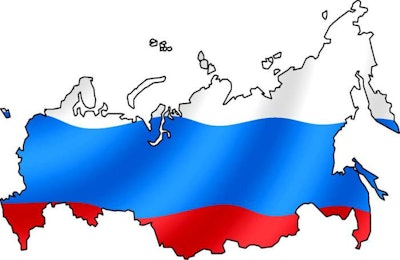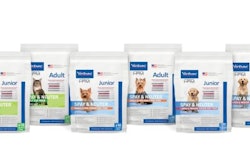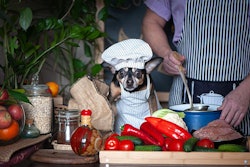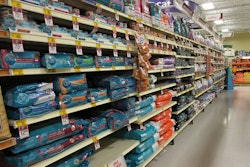
Russia experienced price swings in its pet food market during 2022 owing to supply disruptions, logistics chaos and panic buying, but the market situation calmed down closer to the end of the year, according to market participants.
In 2022, Russia imported 122,528 tons of pet food, nearly a quarter less than in the previous year, the Russian veterinary agency Rosselhoznadzor estimated, adding that given the annual demand on the market is estimated at 1 to 1.3 million tons, imports are not playing a serious role in the market as a whole.
Before sanctions drove some Western brands from the country, Russian pet food plants manufactured only economy and middle-price pet food, while holistic and top premium products were primarily imported, Rosselhoznadzor said. This situation has changed, with several new pet food factories launching in the Moscow Oblast and Belgorod Oblast. More are in the pipeline in other regions, the veterinary body said.
Rosselhoznadzor also emphasized that it expects Russian pet food manufacturers, at some point, can fully meet the domestic demand for holistic and premium pet food.
Veterinary restrictions are here to stay
Currently, Russia imports pet food from France, Italy, Austria, Hungary, Serbia and China, the Eurasia Union member states and some other countries. From Germany, the Netherlands, Spain, the U.K. and Belgium – the countries against which Rosselhozndzor introduced restrictions in 2020-2021 over veterinary issues – currently, 28 companies are allowed to export pet food to Russia.
Last year, Rosselhoznadzor was not significantly banning Western pet food, citing GMO and production fraud concerns as in previous years, but agency officials have repeatedly stated that these problems with imported pet food have persisted. In a February 2023 statement, Rosselhoznadzor said the agency kept discovering the presence of GMOs and components not mentioned on the label in products’ content.
Forced transition to Russian pet food brands
Western pet food remains in high demand among Russian pet owners, though some consumers have to switch to Russian products because some of their favorite brands pulled out of Russia or became too expensive.
A survey by the specialized Russian pet food retailer Cheryre Lapy showed that nearly a third of Russian customers were willing to purchase imported pet food but had to switch to domestic offerings. Currently, 57.2% of Russian pet parents buy locally manufactured pet food. This is likely the highest figure ever. In general, sanctions opened “a window of opportunities” for Russian pet food manufacturers, Cheryre Lapy said.
At the peak of the crisis, when sanctions disrupted supply chains, the price of some imported pet food brands in Russia doubled or even tripled. Still, at the end of 2022, logistics chains were largely rebuilt, and the situation settled down. The Russian state statistical service Rosstate calculated that the average price of dry pet food in Russia at the end of 2022 stood at 312 rubles (US$4.8) per kg, 32% higher compared with the previous year.
New pet food development paradigm
Before the current crisis, Russian pet food production capacities left a lot to be desired. “Basically, we had localized production of the global brands, Mars and Nestle, which was considered Russian, and everything else was at a very poor level, up to the production of food from the remains of something incomprehensible,” said Tatyana Kolchanova, chairman of the Russian Union of Zoobusiness. Last year, however, foreign companies halted their development plans in Russia. For example, in November 2022, Nestle postponed the construction of its Novosibirsk pet food factory in Siberia for 10.5 billion roubles (US$165 million).
Kolchanova expressed confidence that Russian pet food producers will take advantage of the decision by foreign companies to suspend investments into expanding their local production assets. “But there are several difficulties. All equipment is imported ,” she said. “Moreover, we still did not have our own recipes or even technologists who could develop all this. As a rule, when a pet food factory was built, foreign specialists were specially invited to help set up production.” She added that there is a severe labor shortage in the industry since, in Russia, no institutes prepare specialists in pet food production, which are in extremely high demand these days.
Finally, Kolchanova said an import-replacement initiative in the Russian pet food industry is not eligible for any state aid at all, despite all attempts of the industrial community to urge the authorities to extend the support schemes approved for agricultural companies to pet food businesses.















